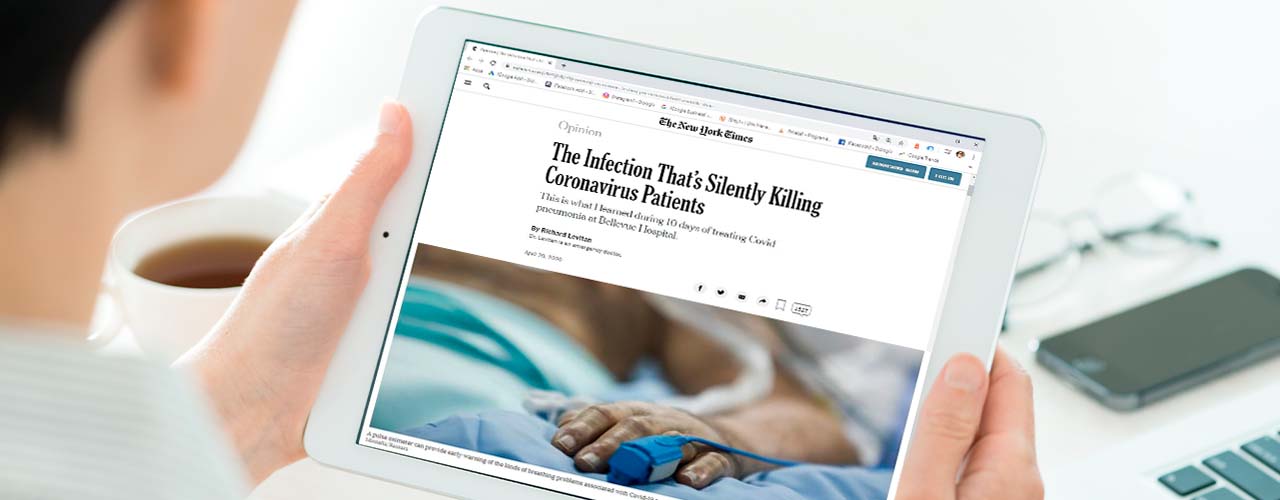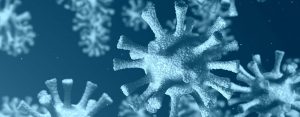- Remote monitoring of oxygen saturation contributes to positive prognosis of patients
- According to the specialist, coronavirus pneumonia is hard to detect
In an article published by the New York Times in April 20, 2020, the specialist in patient intubation Dr. Richard Levitan described his experience in the United States with patients who had Covid-19 pneumonia and stressed the importance of the work Biologix carries out.
According to D. Levitan,, a number of patients surprisingly did not mention any respiratory problems, although their chest X-rays showed diffuse pneumonia and their oxygen levels were below the normal range. This is how it was established that Covid-19 pneumonia entails an initial drop in oxygen levels, called "silent hypoxia” due to its tricky, hard-to-detect nature. These patients had had symptoms for a few days, but they had not experienced breathlessness until the day they sought medical care, when they were in critical condition.
“In my 30 years of practice, most patients requiring emergency intubation are in shock. Covid-19 pneumonia cases are very different. A vast majority of Covid pneumonia patients I met had relatively minimal apparent distress, despite dangerously low oxygen levels and terrible pneumonia on chest X-rays,” writes Dr. Richard Levitan.
Based on this scenario, he offers an important reflection in his article about a product Biologix already uses in Brazil: an oximeter.
"There is a way we could identify more patients who have Covid-19 pneumonia sooner and treat them more effectively. And it would not require waiting for a coronavirus test at a hospital or doctor’s office. It requires detecting silent hypoxia early through a common medical device that can be purchased without a prescription at most pharmacies: a pulse oximeter”.
Dr. Levitan points out oximeters are not more complicated to use than thermometers.
“These small devices are placed on a fingertip. In a few seconds, two numbers are displayed: oxygen saturation and pulse rate. Pulse oximeters are extremely reliable in detecting oxygenation problems and elevated heart rates.”
Dessa forma, ainda segundo Dr. Levitan, o paciente poderia usar o oxímetro em casa ou ir até uma clínica fazer a medição, o que promoveria alertas ao sistema de saúde sobre problemas respiratórios mais graves de seus pacientes. O especialista ressalta que todos os pacientes com Covid-19 deveriam dispor de um oxímetro, mesmo os que ainda não têm o diagnóstico, mas estão com sintomas.
Sensor Oxistar®: o oxímetro de alta resolução da Biologix
In Brazil, Biologix offers a high-resolution oximeter that hospitals and/or physicians are using to monitor remotely the oxygen saturation of patients who tested positive or are with suspicion of Covid-19. Its use can predict the evolution of the disease, and the Online Monitoring Center is able to monitor a countless number of patients. Monitoring is performed via a cell phone application, which receives information on O2 saturation and heart rate collected by the oximeter on patients’ finger.
All the information is sent on-line automatically and in real time to the clinical monitoring center in charge of caring for these patients, thus allowing an early intervention of the medical team.
O artigo publicado pelo New York Times comprova os benefícios do oxímetro, que monitora o paciente, permite o tratamento preventivo, protege os profissionais da saúde e salva vidas.
Click on Click HERE to read the full-text article. clique AQUI.
Know more about Biologix Clinical Signs Monitoring. Speak with one of our consultants here.




